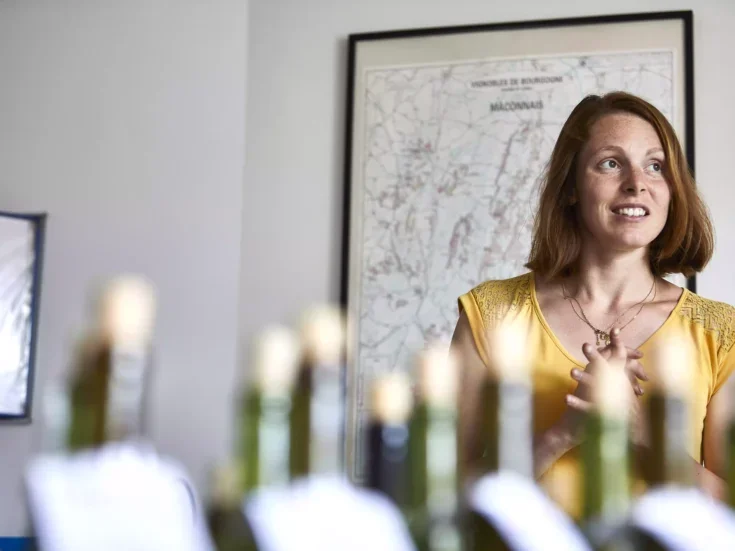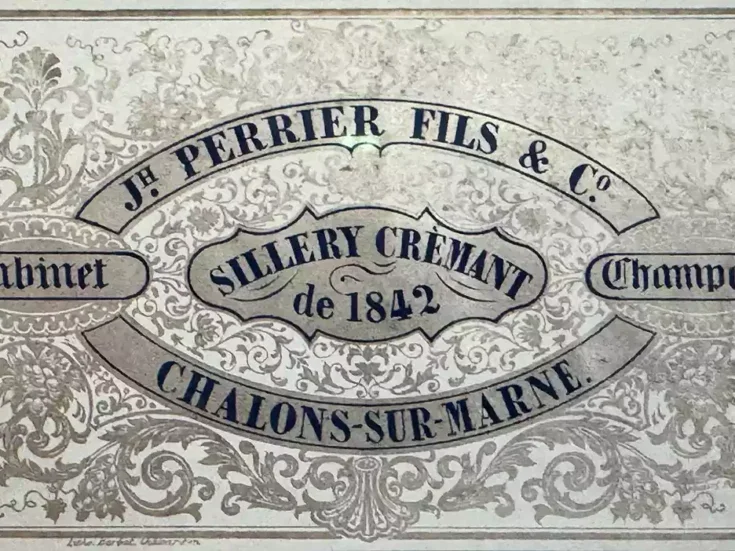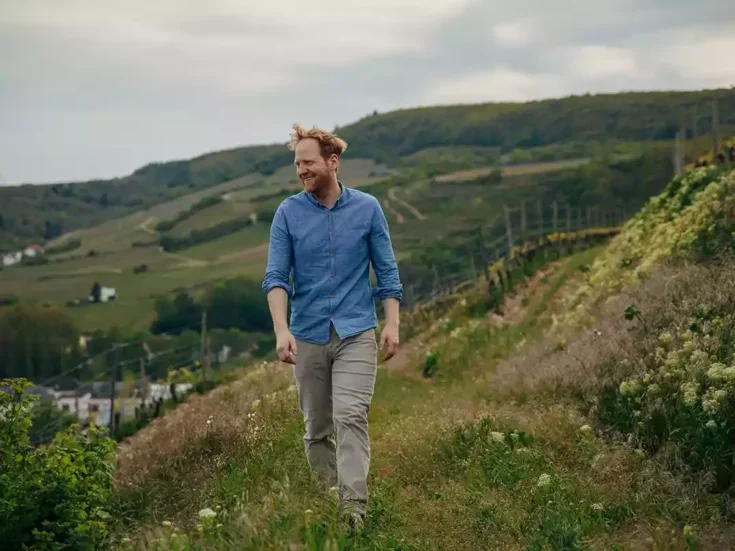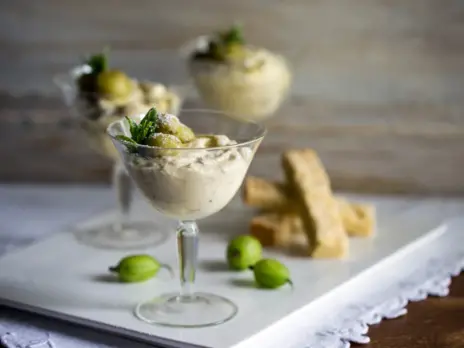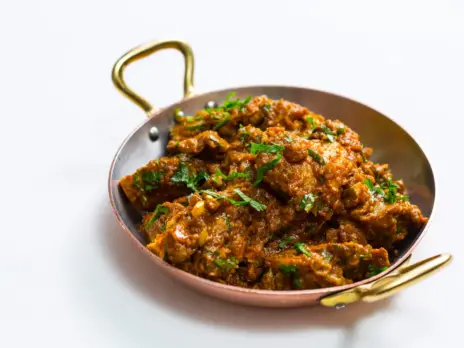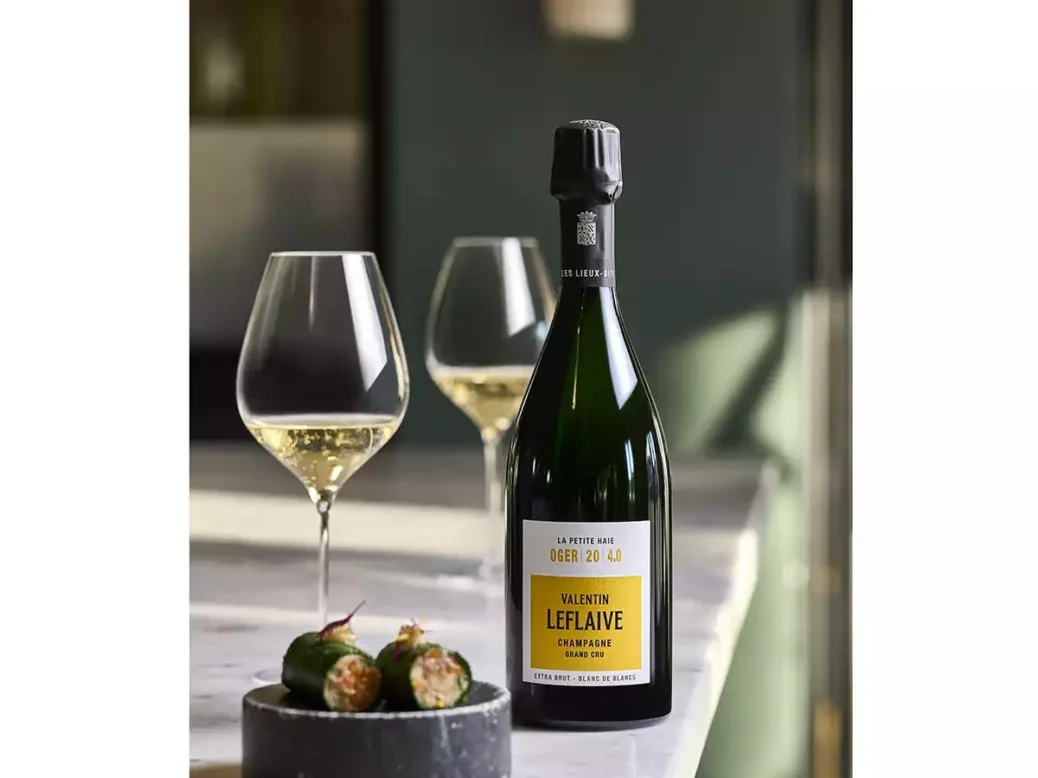
Simon Field MW joins chef de cave Elysé Brigandat to taste the latest single-site releases from Valentin Leflaive.
Elysé Brigandat, chef de cave at Champagne Valentin Leflaive, is a Champenois through and through. Or is he? Born in the Aube Champagne village of Channes, which is located a mere 20 miles (32km) from Chablis, complete with its Kimmeridgian clay, he has always been fascinated by the great wines of Burgundy. It would probably sound more logical if one could say that Chardonnay were his roche mère, but in fact it is Pinot Noir that fascinates him most. “I am a Pinot Noir guy,” he reveals, citing the old Champagnes of the Palmer cooperative among his favorites. No matter; he is the man to develop the range that falls under the aegis of one of the world’s greatest Chardonnay producers, Olivier Leflaive, and, by eponymous extension, his 18-year-old son Valentin, though Elysé is happy to reveal that the boy has yet to decide upon a definitive career path. He may become a banker, or a pop star—who knows? Behind it all, however, is the commercial and creative genius of Olivier, now 80 years old, and a quietly radical plan to reinvigorate the Champagne category. Plot by plot.
How so? Well, the Elysian fields of Champagne have been just as minutely “cadastréd” as the climats of Burgundy. The resulting patchwork of lieux-dits might well appeal to a marketeer or a commercially minded vigneron as a near simulacrum of Burgundy, the precise dissection of which has engendered no lack of high-net-worth plots, some of which are located in Olivier’s beloved Puligny-Montrachet. The impulse to “rebrand” Champagne as a complex Burgundian patchwork has, implicitly, found little appeal with behemoths such as LVMH (Moët, Veuve, Krug, et al), BCC (Lanson), and Vranken Pommery. Scaling down does not square with an impetus where quantity and quality must be, at the very least, on a par, though some may argue that the latter seldom wins out. Their “defense” focuses on the historical identity of Champagne, forged on the concept of blending across varieties, villages, and vintages. Very handy when it comes to volume potential; less so when drilling down into the minutiae of site potential.
Plotting and planning
Volume is not the driver at Valentin Leflaive. The structure of the range, therefore, is unusual, with all three blocks of the qualitative pyramid (Signature, Cru, and Les Lieux-Dits) equally represented in total production of just over 100,000 bottles. “We have 22 lieux-dits in production,” says Elysé, “of which the first four were released in 2024 and the next [which your correspondent has the pleasure to review below] are coming on-stream now.” Each lieu-dit contributes between 700 and 3,000 bottles, and each is aged predominantly in five-year-old Leflaive barrels, though stainless steel is also valued as a part of the process. The base of the pyramid (Signature) is made up of the Sigma Chardonnay blend (seven different villages in the Côte des Blancs), a Rosé (MA) that is sourced from Le Mesnil-sur-Oger and Ambonnay, and another Blanc de Blancs (CV) that is built upon fruit from Cramant and Verzenay. The rest of the pyramid eschews blending altogether and focuses on the great villages, mostly grand cru, mostly from the Côte des Blancs, and then, most significantly, and at its summit, on the small parcels that comprise the lieux-dits. “If the fruit from a parcel does not have its own character, its own sense of place, then it will either be used in the Sigma ‘blend’ or be sold,” reveals Elysé, who also advises that only first pressings are used and that each wine is approached pragmatically in terms of élevage, length of tirage, and dosage, the latter performed “by committee” back in Puligny-Montrachet. Elysé is especially energized by work on the malolactic fermentation, which again cleaves a pragmatic course, with none permitted in a hot year such as 2020, but up to 30% in 2024. In his opinion, Chardonnay is more “responsive” to the challenges of suppressing the second fermentation; he admits that his beloved Pinot Noir can be tart and a little aggressive with a fully suppressed malolactic—work in progress, maybe. Otherwise, the spirit tilts toward laissez-faire, with the holding company’s contribution focused on commercial and marketing matters—not to mention the kudos of the famous name by association, which, per Elysé, has helped the company to establish itself in a famously conservative region.
Valentin Leflaive is now ten years old and is in the process of moving from a modest winery in Oger to a larger installation in Pierry. It does not own land but is keen to do so, if only, says Elysé, “to give a signal of intent to our growers.” There are currently 20 partners, of whom two are certified as organic, the balance compliant to the spirit of sustainable viticulture. The cahier des charges is fundamental, and the relationships, though de facto youthful, are being cultivated carefully. The shared philosophy may be summarized as “less blending and more winemaking”; not, however, at the expense of the vineyard, which is fundamental. The two plots in Oger, for example, are a mere 440yds (400m) apart yet differ significantly in aspect, soil structure, and microclimate. Les Baudures is northeast-facing, located on the hillside at 650ft (200m), with its wines focused on freshness above all else and therefore aged predominantly in stainless steel. La Petite Haie, located at the bottom of the slope, on flatter, deeper soils, is entirely east-facing, its fruit picked later and mainly treated to oak in its élevage, with aromatic harmony fundamental to its identity. The difference between the two is quite striking—Burgundian one may say.
Elysé recognizes “the big challenge of capturing the style and mentality of Olivier Leflaive into Champagne.” A big challenge, for sure, but also a worthy and rather exciting one. “The goal is not to be like Burgundy but to translate the style and codes of Burgundy into Champagne, which has not really been done before.” Single-vineyard plots are not without antecedent or respect in the region; one only has to think of Krug’s Clos du Mesnil, or Philipponnat’s Clos des Goisses. Yet blending, in its broadest context, is sacrificed. The Valentin wines are either blancs de blancs or they are blancs de noirs, and no Meunier is employed. “A Burgundy vision of Champagne,” which Elysé extends to cover a “transparency and a quest for the origin of taste.” Lofty ambitions, maybe, but this is what terroir is all about, and maybe its exploration is somewhat overdue in Champagne. Elysé’s inquiring mind seems well suited to the challenge; his unusual name, by the way, honors his great-great-grandfather, who was also a citizen of Channes. It will be interesting to see if his preference for Pinot Noir is eventually supplanted by a love for Chardonnay, given its dominance in the Valentin Leflaive range—and, of course, the expertise of a certain Leflaive Sr when it comes to this particular grape variety.
Tasting Valentin Leflaive
Cramant Les Bauves Blanc de Blancs (Base 2020; disgorged November 7, 2024; dosage 5g/l)
An east-facing vineyard in the vale of Cramant, Bauves rests on clay-limestone and Campanien chalk. Floral elegance, as so often in this village, underwrites a generous, ripe structure, with a touch more dosage than elsewhere, underscoring approachability. Nonetheless, this is characteristically serious. The woody balustrade lends gravitas in support of the generous palate profile; orchard fruit garlands more exotic notes (pineapple and quince) and the ensemble does not lack for gastronomic potential. Elysé considers this the most Burgundian of the sextet, and it is indeed hard not to think of Puligny-Montrachet—or indeed of Olivier Leflaive himself. | 94
Oger La Petite Haie Blanc de Blancs
(Base 2020; disgorged November 6, 2024; dosage 4g/l)
Soft gold, with a persistent, energetic mousse, then an attractive nose recalling lemon and ginger posset; white flowers, too. Elegant and ethereal, but then hints of vanillin and white chocolate add rondeur. Richer, more forward and broader on the palate than its sibling from Oger (Les Baudures), with hazelnut praline, umami, and orchard fruit all adding color. A little more serene than Les Baudures; more successful on the day for this taster, but still young. | 93
Oger Les Baudures Blanc de Blancs
(Base 2020; disgorged October 28, 2024; dosage 4g/l)
The vines for this are higher than those for La Petite Haie, and the vinification is a touch more reductive, yet paradoxically, Les Baudures appears more overtly oaky—resinous, almost—and the acidity is more prominent. Orchard fruits are dominated by red apples, then flint, peat, and chalk, a robust and still slightly disjointed ensemble, which is nonetheless neatly chiseled and elegantly tapered. Unexpected notes of church candles and walnuts on the finish. Let’s see in a couple of years! | 91
Avize Les Roches Blanc de Blancs
(Base 2020; disgorged October 29, 2024; dosage 4g/l)
East-facing, 35-year-old vines, the eponymous clay-limestone surface bedded with Campanien chalk. Bright and energetic, with an aromatic dominated by greengage and grapefruit, with lower notes of petrichor and mirabelle plum in support. So far, so very Avize, its style suited to the Valentin Leflaive modus operandi. The wood, sometimes a little obtrusive in this range, is, in this instance, nicely integrated, allowing the marriage of stone fruit and a robust structure to be happily consummated. | 94
Mareuil-sur-Aÿ Les Basses Clefs Blanc de Blancs
(Base 2020; disgorged November 4, 2024; dosage 2.5g/l)
A “mere” premier cru, Mareuil-sur-Aÿ, with its fabulous south-facing chalky terroir, has long been viewed as a de facto grand cru. A super-second, if you like. This wine more than justifies such status. It is bright, with a generous, lively mousse and a rich, luminous color. Despite the name, there is no shortage of high notes here, but plenty of depth, too. White and yellow fruit dominate nose and palate alike, with mirabelle plum and white peach to the fore, the faintest hint of tropical fruit thereunder (pineapple and banana). Generous and complex, in other words, but with finesse and a finely tapered finish, underwritten by salinity and impressive longevity. | 93
Verzenay Les Longues Raies Blanc de Noirs
(Base 2020; disgorged November 2024; dosage 3g/l)
The odd one out in a Chardonnay-dominated family, Les Longues Raies is made exclusively from Pinot Noir, its source the famous northern Montage de Reims village of Verzenay. A golden color with amber highlights, then an expressive Pinot nose of ripe red fruit and soft spice. Both themes resonate across the palate, which is elegantly structured, fresh, and composed. A hint of pepper completes the picture. Very promising it is, too. | 92

